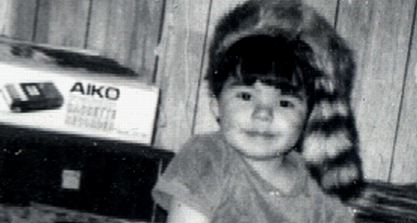There are opportunities for us (Fort Frances artists and residents, plus regional entities) to acknowledge portions of local prehistory that have been lost to "development" over the last several decades.
The point of land that is called Pither's Point Park (PPP), previously had
SIX prehistoric ancestral burial mounds (page 18, reference link) that were destroyed by rising waters behind the dam on the Rainy River, an
archaeological excavation in 1959, "landscaping" for the park and road/rail development.
This summer, the Fort Frances township and museum will
begin moving the tower and drydocked ship, The Hallet, from Pither's Point Park to the town riverfront. This presents an excellent opportunity to honour and acknowledge the ancestral importance of the property.
I have some project proposals for the PPP site:---Honour and acknowledge the lost mounds, by replacing or recreating them. ---Design and install a new historical plaque, or interpretive station. ---Design, create and install significant public statuary on the site. ---Lobby the railroad company to build a pedestrian walkway around the end of the point, under the rail-bridge. I believe that realisation of these ideas will provide benefits beyond mere aesthetic considerations.
The Couchiching Community, local First Nations, the Township of Fort Frances, the regional 'Tourism Economy' and the local artistic community all stand to gain from the presence -and investment in- of a
strong, prominent cultural destination.
How -and where- could we recreate a mound?It is spiritually and physically impossible to remake a mound, "exactly as it was"; original burials were scattered, the original locations have been eroded away by water and obscured by development. The concrete base of the tower could be a solid base to build a simple conical mound upon, but the location is very close to the railway track and potential erosion; instead, I suggest keeping it as a platform for any historical plaque or interpretive station. I would suggest a location nearer the southernmost point of the peninsula, on the large grassy flat, visible from: the water, the road, town 'harbourfront' and the USA side of the river.
A new mound need not be a simple, rounded pile of fill, stabilised by grass and drainage gravel, but could be in the form of a shaped "earthwork" or
effigy mound(s) -with symbolic meaning beyond its mass. There are many pictographic "rock art" paintings on Rainy Lake that suggest design motifs for an earthwork mound (Illustration 1 and 2): Canoe, Turtle or Thunderbird, perhaps. Earthwork mounds are best viewed from above, but visually engaging at ground level.
How would a historical plaque get created?There is a
program at the provincial level, through the Ontario Heritage Trust, to create and install historical plaques at significant sites.
What would a historical plaque on the point say? If I were to write the history of the place, it would emphasize the importance of the area's rivers and lakes as a continental transportation hub for prehistoric economies and resource-provider for eons of civilisations.
How does public (bronze) statuary get made?
(The short answer.): Artist and community discuss what ideals/hopes/honouring need to be expressed by the art-piece. Artist suggests several possibilities and provides sketches to discuss. Community agrees on a visual form, presentation and placement. Artist firms up budgetary needs. Money is sought and found to make the project happen. Artist creates the initial form and keeps community up to date on progress; community begins to prepare site. Bronze foundry receives form and creates rubber and plaster negative "mother moulds". Foundry creates wax "positives" of the forms, then casts them in bronze. The metal pieces are broken out, welded together, surface-finished and prepared for installation. Community has installation site prepared; any lighting finished. Statue is transported to site and installed. TV crews, politicians, tourists show up for unveiling.
The Pither's Point Park site is a natural location for sculptural installation and is currently under-recognised by our visitors; often missed entirely.
I think that large sturgeon and bass sculptures would resonate with prehistorical, historical and contemporary economies. My preference with outdoor statuary is bronze. My experience is through the
Anurag Art Bronze Studio and Foundry.
Why a pedestrian path under the bridge?Currently; the two side of the point are divided by the raised railway bed. The only way to legally reach the other side of the tracks is to walk back three hundred yards, cross at the level crossing, then walk back up three hundred yards.
--------------------------------------------------------------------------------------------------
Pic (click to enlarge) of construction of original bridge at PPP; 1907-1908, as far as I have been able to narrow it down.
 Archive location for above pic
Archive location for above pic Burial Mound
Burial Mound (date unknown to me, currently); Pither's Point Park, Fort Frances, Rainy Lake, Northwestern Ontario.

Pither's Point Park ("about 1936-7" written on photo); beach and pavillion, Fort Frances, Rainy Lake, Northwestern Ontario (click to enlarge).

--------------------------------------------------------------------------------------------------
Tags:
pither's point park, burial mounds, earthworks, international bridge, sculpture park, bronze sculpture, public art, native art, couchiching, ojibway land, Bingorage, Broken Vulture Art, blog, pics





































